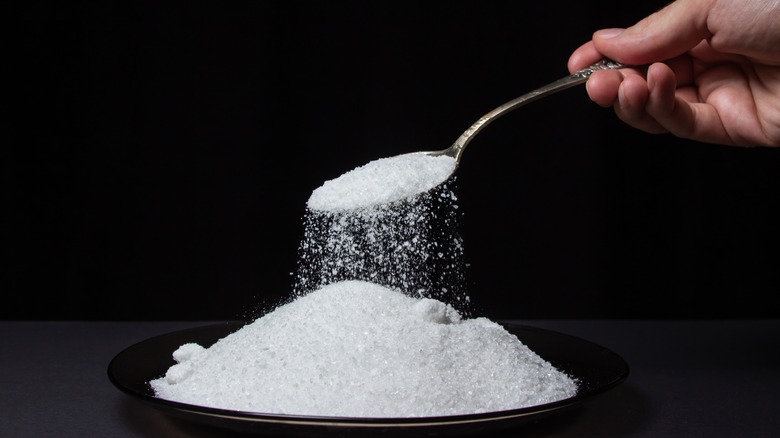Why You Should Avoid Using Table Salt In Your Pickles
Pickles are curiously complex yet relatively simple to make with the right information. The word even has its peculiarities. Pickle is both a noun and a verb. You can be " in a pickle," which means inebriated if you're Shakespeare, but these days the idiom implies you're in a tricky situation (per Grammerist). Fruits, vegetables, eggs, and meat can be pickled, and there are a wide variety of cucumber pickles, including kosher dills, bread and butter, gherkins, and Polish and Hungarian styles. There's even a bright red Kool-aid pickle. Still, basic pickling is relatively easy and is a process available to the home cook. At its bare bones, there are two ways to make pickles: lactic acid fermentation and fresh pack pickling (per The Culinary Pro).
Still, making pickles requires some skill and knowledge. The process usually falls under the responsibilities of the Garde Manger in a classic professional kitchen. And, knowing what kind of salt to use and, just as importantly, what type not to use is essential for the task. There are many salt options and preferences: Himalayan pink, Maldon, fleur de sel, kosher, curing, pickling, and, of course, iodized table salt. You may have a favorite for cooking, but it might not be the right choice for whipping up some half-sours.
Which salt is best for pickling?
Pickling or canning salt is the first choice of both home and pro picklers, according to MasterClass. This form of salt is pure sodium chloride with no additives. Kosher salt is another option, though you must read the packaging to be sure it doesn't contain an anti-caking agent because they're non-soluble and can make your brine cloudy. It won't spoil your pickle, but it may look unappetizing. When using one salt in place of the other, the measurements must be converted (per Morton Salt) to accommodate their different grain size and densities.
There are two kinds of salt you don't want to use. The first is iodized table salt. Iodized salt became available in the U.S. in 1924 to combat a prevalent iodine deficiency in the Michigan populace (per the National Academy of Medicine). Also, table salt contains anti-caking agents. Though neither additive affects the taste of the pickle, additives can affect the eye appeal of your pickles.
Interestingly, both kinds of pink salts, Himalayan and curing salts, are not recommended for pickling. Oregon State University informs us that though Himalayan salt's high mineral content is good for your body, it can affect the quality of pickles.
Preserve and Pickle confirms that curing or Prague salt isn't used to make pickles. It is dyed pink to keep from confusing it with other salts. If you're in a pickle and only have iodized, curing, or Himalayan salt available, skip your preserving and consider making tzatziki instead.

